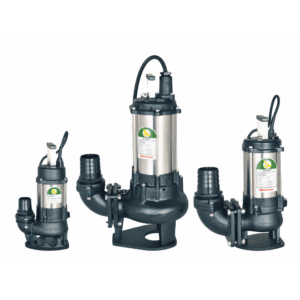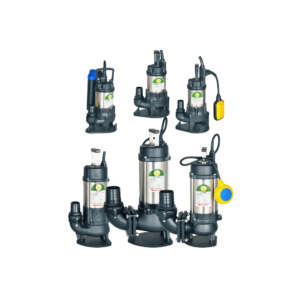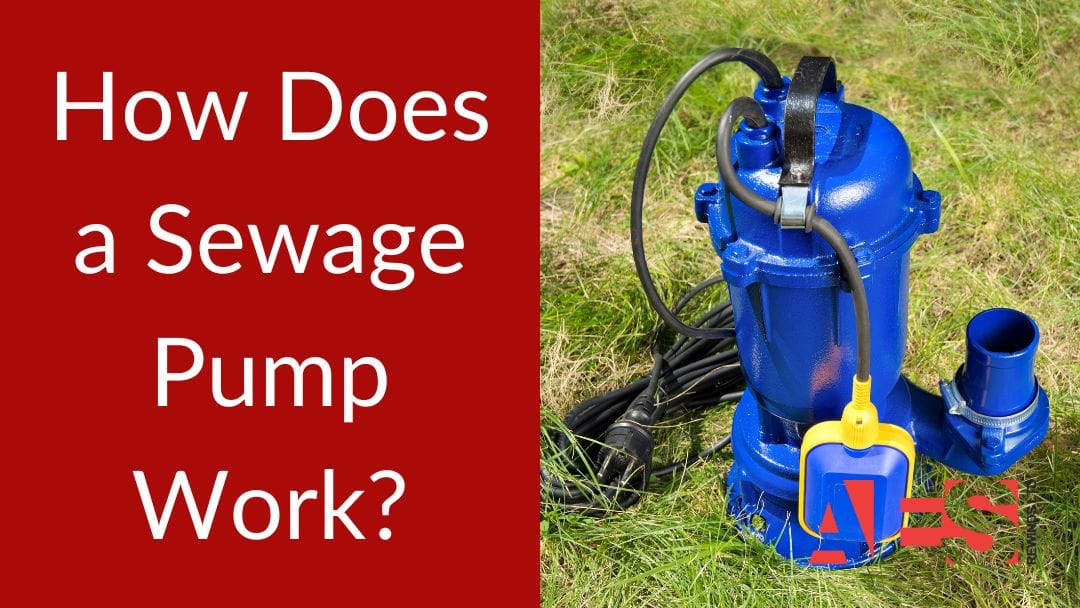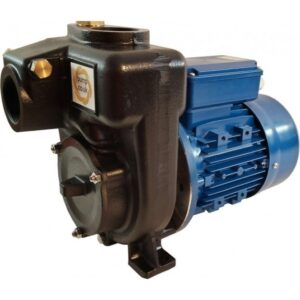You’ve probably never given much thought to sewage pumps, but they play a vital role in your daily life. These unsung heroes of waste management ensure that your home remains sanitary and odour-free.
But have you ever wondered how they actually work?
Understanding the mechanics behind sewage pumps can help you appreciate their importance and potentially save you from costly plumbing disasters.
As you’ll soon discover, there’s more to these devices than meets the eye, and their clever design allows them to handle some of the most challenging waste disposal tasks with surprising efficiency.
What is a Sewage Pump?

Designed to tackle the dirty work of waste management, a sewage pump is an essential device that moves sewage liquids and solids from buildings to sewer systems or septic tanks.
You’ll typically find these pumps installed at the lowest point of a sewage basin, ready to spring into action when needed. These pumps are vital for maintaining community cleanliness and preventing unwanted build-ups in drainage systems, ensuring effective wastewater management.
Sewage pumps come in various types, each suited for different applications. You might encounter submersible pumps, which operate while fully submerged in wastewater, or solid-handling pumps that can process larger solids up to 2 inches in diameter.
At the heart of most sewage pumps is an impeller, a rotating component that creates the pressure needed to move waste through pipes.
When you’re dealing with areas where gravity alone can’t do the job, these pumps become your go-to solution. They’re particularly handy in low-lying areas or basements where wastewater needs an extra push to reach the main sewer line.
How does a sewage pump work?

Diving into the inner workings of a sewage pump, you’ll find a system that’s both simple and ingenious. At its core, a sewage pump uses a rotating impeller powered by an electric motor to move waste from lower to higher elevations. When the sewage level in the pump basin reaches a certain height, a float switch activates the pump, triggering the process.
Solid-handling pumps are specifically designed to manage raw sewage containing larger solids, ensuring efficient waste management in various settings.
Here’s what happens next:
- The motor starts, turning the impeller
- Centrifugal force pushes the sewage through the discharge pipe
- Waste is transported to the main sewer system or septic tank
As the pump operates, it creates suction that draws in both liquids and solids. Solid-handling pumps are designed to manage larger waste particles without clogging, ensuring smooth operation. The discharge pipe carries the pressurised sewage to its destination, effectively managing waste in areas where gravity alone won’t do the job.
To keep your sewage pump running smoothly, proper installation and regular maintenance are key. By understanding how your pump works, you’ll be better equipped to spot potential issues and keep your system flowing efficiently.
What are the types of sewage pump?
You’ll find several types of sewage pumps, each designed for specific needs.
Effluent pumps handle liquid waste from septic tanks, while solid handling pumps can manage raw sewage containing solids.
If you’re dealing with tougher waste or potential misuse, you might want to consider grinder pumps, which crush waste to prevent clogs.
Effluent Pumps
Among the various types of sewage pumps, effluent pumps stand out for their specialised role in wastewater management.
These pumps are designed to handle clear wastewater from septic tanks, moving it to drain fields or treatment facilities. Unlike their solid-handling cousins, effluent pumps aren’t built to tackle raw sewage with large solids, which could lead to a messy situation if you tried!
You’ll find effluent pumps in small on-site sewage treatment systems, typically serving individual homes or small businesses. They’re the unsung heroes of your septic tank, working quietly to prevent overflow and keep things flowing smoothly.
Here’s what makes them tick:
- Lower horsepower for energy efficiency
- Automatic activation when water levels rise
- Ability to handle liquid waste without solids
Your effluent pump system is designed to kick into action when the water in your septic tank reaches a certain level.
It’s like having a vigilant guardian for your wastewater, always ready to spring into action. By efficiently moving clear wastewater, these pumps help maintain a healthy septic system and keep your property free from unpleasant surprises.
Solid Handling Pumps
Moving beyond effluent pumps, we encounter solid handling pumps, the workhorses of sewage management systems. These robust devices are designed to tackle raw sewage containing solids up to 2 inches in diameter. You’ll find them in both residential and commercial settings, ensuring efficient waste management where gravity alone won’t suffice.
Solid handling pumps come in two main varieties: non-grinder and grinder pumps. Non-grinder pumps are your go-to for typical household use, while grinder pumps take things up a notch with rotating blades that slice and dice solids to prevent clogs.
Both types use a rotating impeller to create suction, drawing in sewage and pushing it through a discharge pipe to the main sewer system or septic tank.
When choosing a solid handling pump for your pumping station, consider the specific needs of your property. If you’re a landlord, you’ll want to be particularly careful in your selection to prevent misuse by tenants.
-
%27%20fill-opacity%3D%27.5%27%3E%3Cellipse%20fill%3D%22%23000005%22%20fill-opacity%3D%22.5%22%20rx%3D%221%22%20ry%3D%221%22%20transform%3D%22rotate(120.6%2028.9%20102.6)%20scale(80.903%20112.53758)%22%2F%3E%3Cellipse%20fill%3D%22%23fff%22%20fill-opacity%3D%22.5%22%20rx%3D%221%22%20ry%3D%221%22%20transform%3D%22rotate(-7.5%202236.5%20-813.5)%20scale(298.82813%2054.24267)%22%2F%3E%3Cellipse%20fill%3D%22%23fff%22%20fill-opacity%3D%22.5%22%20rx%3D%221%22%20ry%3D%221%22%20transform%3D%22matrix(283.87837%2093.33446%20-19.58843%2059.57855%20264.4%207.5)%22%2F%3E%3Cellipse%20fill%3D%22%23fff%22%20fill-opacity%3D%22.5%22%20rx%3D%221%22%20ry%3D%221%22%20transform%3D%22matrix(-60.24437%20-133.42649%2042.99932%20-19.41494%2037.5%20262.2)%22%2F%3E%3C%2Fg%3E%3C%2Fsvg%3E) GT Self Priming Solids Handling Dirty Water Electric Pump£478.20 – £608.32Price range: £478.20 through £608.32 +VAT
GT Self Priming Solids Handling Dirty Water Electric Pump£478.20 – £608.32Price range: £478.20 through £608.32 +VAT
Grinder Pumps
Grinding through the toughest waste, grinder pumps stand out as the heavy-duty champions of sewage management. These powerful machines are designed to handle raw sewage with ease, making them ideal for properties with higher wastewater demands.
Unlike their non-grinding counterparts, grinder pumps come equipped with rotating blades that pulverise solids into smaller pieces, preventing clogs and ensuring smooth flow through the sewer system.
You’ll find grinder pumps particularly useful in situations where:
- Rental properties might experience improper waste disposal
- Fibrous materials or larger solids are frequently present in the sewage
- The system requires processing of tougher waste materials
When the sewage level in the wet well reaches a certain point, a float triggers the grinder pump to start. It then pressurises and grinds the waste before sending it on its way.
While these pumps are incredibly efficient, it’s best to avoid using them in septic systems. Their grinding action can disrupt the natural separation process, potentially harming the system’s effectiveness.
How to Choose the Right Sewage Pump
When selecting the right sewage pump, you’ll need to evaluate several key factors to guarantee peak performance and reliability. First, take into account the type of sewage you’re dealing with. Is it primarily liquid waste, or does it contain solids that might require a grinder pump?
Next, assess the flow rate and pressure requirements for your specific environment. These factors will help determine whether you need a submersible pump or a surface-mounted model.
Submersible pumps are ideal for high-water-table areas and can handle various liquids, including clean water, dirty water, and sewage. They also feature a float mechanism for automatic operation based on water levels.
For challenging applications with fibrous materials, you might want to look into the JS Grinder pumps. If you’re dealing with normal effluents, the Pentair Jung Nocchi Priox could be a good fit.
Don’t forget to take into account pumps that allow solids to pass through without blocking, especially if foreign matter is likely to be present in your system.
It’s always a good idea to consult with experts to guarantee you’re making the best choice. After all, you don’t want to end up with a sump pump when you need something more robust for your main sewer line!
If you’re still unsure, don’t hesitate to contact us for personalised advice.
Frequently Asked Questions
Should a Sewage Pump Run All the Time?
No, your sewer pump shouldn’t run all the time. It’s designed to activate only when needed, typically when sewage reaches a certain level. Continuous operation can lead to overheating, wear, and reduced efficiency. Regular maintenance ensures proper functioning.
What are the Disadvantages of a Sewage Pump?
The disadvantages of a sewage pump include:
- Need for backup systems or generators in case of power failure
- High installation costs compared to gravity-based systems
- Regular maintenance requirements to prevent clogs and breakdowns
- Dependency on electricity, making the system vulnerable during power outages
- Risk of mechanical failures that can lead to sewage backups
- Unpleasant odours if not properly maintained
- Noise during operation
- Limited lifespan, typically requiring replacement every 7-10 years
- Higher energy costs due to continuous power consumption
- Potential for costly repairs if components fail
How Does a Sewage Pumping Station Work?
You’ll find that a sewage pumping station collects wastewater in a wet well. When it reaches a certain level, float switches activate pumps. These pressurise and transport the sewage to the main sewer system or treatment facility.
Can a sewage pump handle toilet paper?
Yes, sewage pumps are designed to handle toilet paper. Most modern sewage pumps can effectively process regular toilet paper without issues. However, only use toilet paper that’s designed to break down in water, and avoid flushing excessive amounts at once. Never flush “flushable” wipes, paper towels, feminine products, or other non-toilet paper items, as these can clog or damage the pump.
- To maintain optimal pump performance:
- Clear any visible blockages promptly
- Use regular toilet paper only
- Flush reasonable amounts
- Follow manufacturer guidelines
- Schedule regular maintenance
What is the difference between a drainage pump and a sewage pump?
The main difference between drainage pumps and sewage pumps lies in their design and intended use:
Drainage Pumps:
- Handle clear or slightly dirty water
- Process smaller solid particles (typically up to 3/8 inch)
- Typically used for: basement flooding, pool drainage, irrigation runoff
- Generally have smaller motors and narrower impeller gaps
Sewage Pumps:
- Include grinding mechanisms in some models to break down solids
- Handle raw sewage and waste material
- Process larger solid particles (up to 2 inches)
- Typically used for: bathroom waste, kitchen waste, septic systems
- Feature larger motors and wider impeller gaps to prevent clogging
How do I know if I have a sewage pump?
A Sewage pump is normally labelled as such but other signs you have a sewage pump include:
- Your bathroom fixtures are below the main sewer line level
- You have a basement bathroom
- There’s a large basin or pit in your basement/crawl space
- You can hear pumping sounds when flushing toilets or using drains
- Your home’s plumbing system includes a visible pump with pipes leading outside
- Your property lies lower than the municipal sewer connection
- You have an alarm system specifically for sewage backup
To confirm:
- Review your property’s building permits
- Check your home inspection report
- Look for a covered sump pit in basement/crawl space
- Consult your home’s blueprints
- Contact your local plumber or previous homeowner
Do sewage pumps need maintenance?
Yes, sewage pumps require regular maintenance to ensure reliable operation and prevent costly breakdowns. Key maintenance tasks include:
- Inspecting and cleaning the pump regularly to remove debris and buildup
- Checking and replacing worn parts like seals and bearings
- Testing float switches and alarms
- Monitoring oil levels and changing as needed
- Verifying proper electrical connections
- Checking for unusual noise or vibration
- Following manufacturer-recommended maintenance schedules
Professional servicing is recommended at least annually, with more frequent checks for heavily used systems. Proper maintenance extends pump life and helps avoid sewage backups or system failures.
Conclusion
You’ve now got a solid understanding of sewage pumps and how they work. Remember, these unsung heroes of waste management keep our homes and communities clean and healthy. When choosing a pump, consider your specific needs and get in touch with our team if you’re unsure. Regular maintenance will keep your pump running smoothly, saving you headaches down the line. With this knowledge, you’re well-equipped to tackle any sewage pump challenges that come your way.


